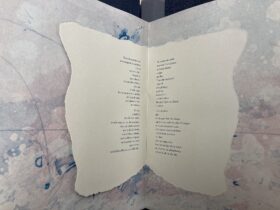
In our digital age of e-readers and same-day delivery, it’s worth remembering how much blood and sweat used to go into the distribution of the written word. Consider the journey of a book I’ve had the rare privilege to examine, a Catholic breviary published in 1697. A call-and-response worship device, bound with wooden boards and covered in tooled leather, it is printed in bold blacks and reds and features lush illustrations throughout. The massive tome measures 18 inches high, 12 inches wide, and six inches thick, and weighs in excess of 22 pounds. Not an easy book to carry around. Yet, not long after its publication, someone did carry it—all the way from its publishing house in Antwerp, down the thousand miles through Europe and the Iberian Peninsula to the city of Seville. There it was loaded onto a boat and transported down the River Guadalquivir to the Atlantic loading port of Sanlúcar, where, along with thousands of other books, it began a month-long journey to the Caribbean Sea. Arriving at one of the islands of the Lesser Antilles, it was offloaded and placed aboard a smaller vessel for transit through pirate-infested waters to the port of Nombre de Dios (later Portobelo), which lay on the Atlantic side of the Isthmus of Panama.
The next leg of the journey, crossing the Isthmus itself, a mere 30 miles at its narrowest point, was a cursed ordeal. The shorter of the two possible routes took only four days but wended up into the mountains and along the Isthmus’s spine on a perilously rugged and narrow path. The longer route, known as the Gorgona Trail, was safer but required two weeks of hard travel down the Atlantic coast to the Chagres River, a muddy mess harboring dangerous reptiles and malarial mosquitoes. Adding to the difficulties of either itinerary was the presence of pirates and fugitive slaves whose livelihood depended on plunder. Both routes led to the city of Panama, on the Pacific side of the Isthmus. From there, the breviary and its companion books were loaded onto galleons for the 1,400-mile voyage down the Pacific coastline to Lima—the City of Kings and, for the legions of Spaniards seeking their fortunes, the major port of arrival in South America.
Once in Lima, where they often spent some time in the collections of private owners, the books eventually made their way south some 630 miles, probably carried by mules through the mountains, to the southern city of Arequipa. Some of them may also have been shipped down the coast to the port of Islay, then hauled uphill another 70 miles by mule or oxcart to reach the city. In all, the breviary, which I could barely lug from one room to another, and whose precise route to the New World we can, of course, never truly know, traveled about 9,000 miles to reach its destination.





